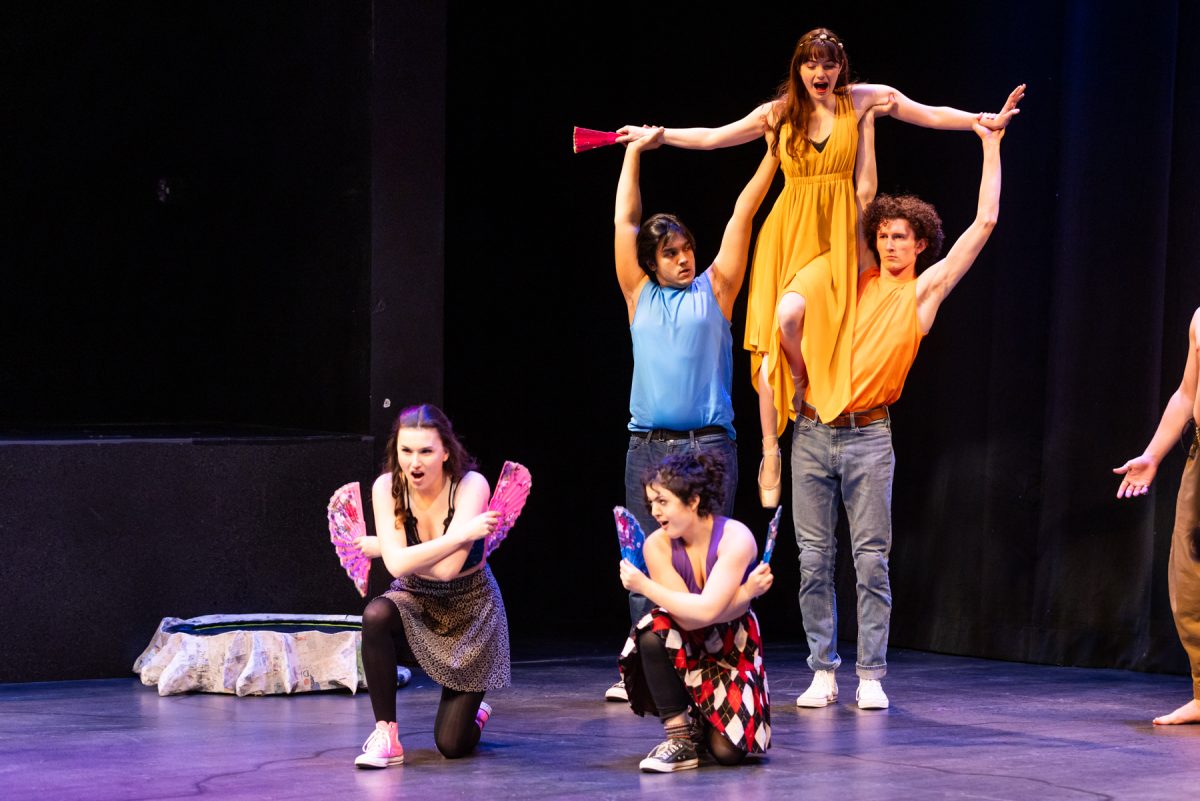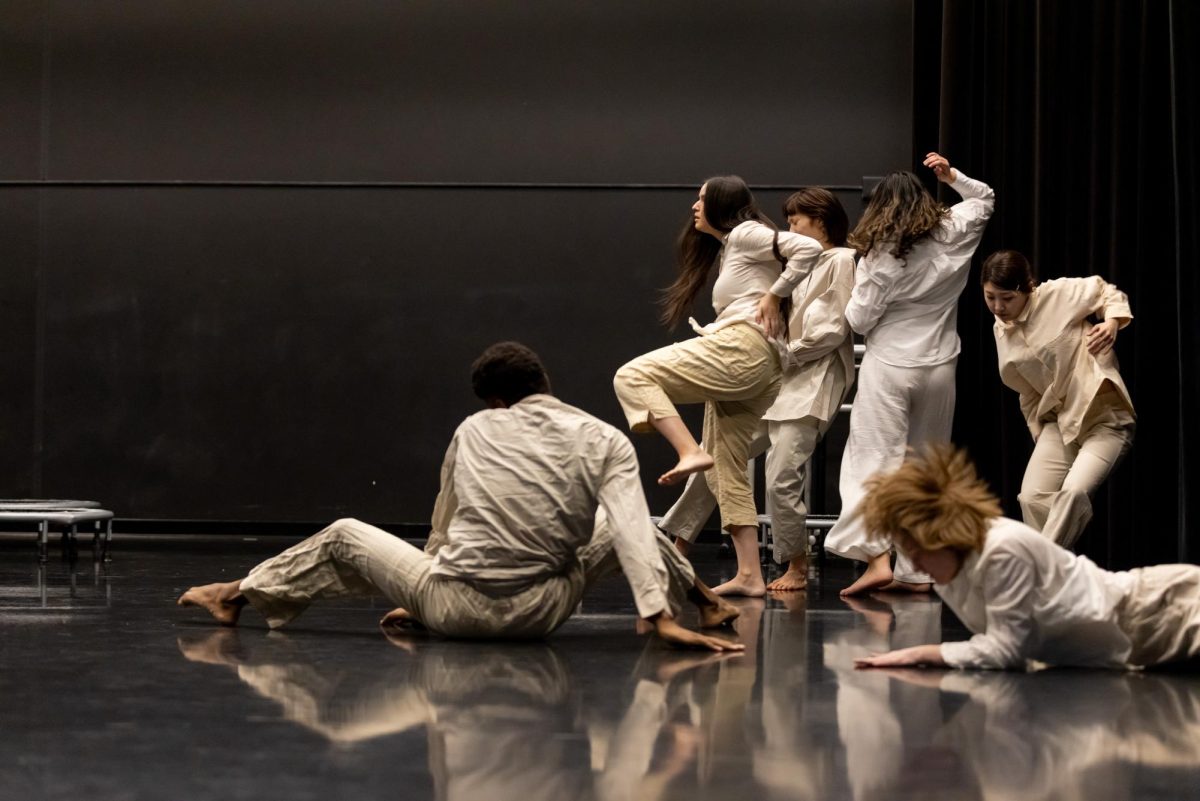The consensus is that Arthur Mitchell did for ballet what Jackie Robinson did for baseball.
As the first black man to be a principal dancer in a major American ballet company, Mitchell broke down racist barriers and carved a path for other blacks to follow into the exclusive world of classical ballet.
Mitchell’s Dance Theatre of Harlem performs at Northrop Auditorium next week. The significance of Mitchell’s role, and his return to the Twin Cities, shouldn’t be underestimated. “He’s one of, if not the only founding artistic director that’s still alive. He knows we can always do better, and he’s got such an eye for seeing and nurturing the talent in his dancers,” principal dancer Lenore Pavlakos said.
The performance at Northrop – the first in 10 years – pays homage to Black History Month with its first piece, “South African Suite.” The dance is set to an old African lullaby performed by the Soweto String Quartet and co-choreographed by Mitchell and two others. Additionally, the performances give local ballet enthusiasts another chance to mark the centennial of one of the greatest figures in American ballet: George Balanchine.
Mitchell first made headlines in 1955 when Balanchine asked him to be a member of the New York City Ballet. The first permanent black male dancer in a major ballet company, he soon became a principal dancer and spent 15 years with the ballet.
But before he became famous for his dancing, Mitchell had a decidedly more humble existence. He was born in Harlem, New York, in 1934; when he was older he shined shoes to earn money and in his spare time learned to tap dance at a glee club. He earned a full scholarship to the New York High School of Performing Arts where the instructors tried to turn him to modern dance, a form that accepted black male dancers. Another teacher, a former soloist for the Martha Graham Company, saw something in him that made her believe he could change the world of ballet, and with her encouragement he attended ballet classes at the Katherine Dunham School of Dance.
He danced in Paris before graduating and then accepted a scholarship to New York City Ballet’s School of American Ballet instead of attending a school for modern dance. Parents of his white female classmates were upset that their daughters were partnered with a young black male, but the complaints and criticisms had little effect on Balanchine and his school.
Mitchell was enrolled in the School of American Ballet for two years before he was asked to join the 7-year-old New York City Ballet in 1955, and his first performance was in the fourth movement of Balanchine’s “Western Symphony.” Balanchine created two roles, the Pas de Deux from “Agon” and Puck in “A Midsummer Night’s Dream,” especially for Mitchell. Balanchine’s ideal of a truly democratic and equal United States compelled him to recognize Mitchell’s talent with major roles, and he refused to allow racism to disrupt his company.
Georgi Melitonovitch Balanchivadze was born in St. Petersburg, Russia, in 1904, and attended the Imperial Ballet School and the Conservatory of Music. According to the New York City Ballet’s Web site, he moved to the United States in 1933 after an impressive career in Europe. He took the name George Balanchine soon after.
He worked his way through various companies, creating some and collaborating with other dancers and choreographer for others. The New York City Ballet opened in October 1948, and Balanchine was the artistic director until his death in 1983. He was well-known for his love of the United States; he choreographed ballets entitled “Stars and Stripes,” “Union Jack” and “Western Symphony.” However, he didn’t confine himself to choreographing traditional ballet, instead branching out into musical theater, opera-ballets, films and television stagings of his works.
It’s been said that Balanchine choreographed 465 works, starting with a pas de deux (step for two) called “La Nuit” in 1920 and continuing for more than 60 years until he created a solo dance for composer Igor Stravinsky’s “Variations for Orchestra” in 1982.
In 1957, Balanchine directed Stravinsky’s ballet “Agon.” The ballet is about struggle, and its title translates to “the contest.” Mitchell danced the pas de deux in a white T-shirt and black tights, enhancing the contrast to his partner’s black leotard and white skin. Balanchine drew criticism once again, this time for pairing a black man and a white woman. He ignored his critics. When told Mitchell could not dance on television with the rest of the company, Balanchine said none of his dancers would perform. It was 11 years before that would change, and Mitchell finally danced a pas de deux on “The Johnny Carson Show” in the late 1960s.
After the 1968 assassination of Dr. Martin Luther King, Jr., Mitchell returned to his Harlem roots to give children there an opportunity to study dance. His first classes were taught in an old garage and started giving lectures and demonstrations. He received a grant from the Ford Foundation, and in 1969 he formed the Dance Theatre of Harlem with his former teacher Karel Shook. Today the company includes almost 50 members with more than 1,000 students in the school.
In a 2003 interview with The Clarion-Ledger of Jackson, Miss., he said, “It started as a school, to get young people off the streets and into the arts. I saw the frustration and the anger that was bottled up in them. Rather than taking that out in a negative way – burning, fighting, killing – take all that animosity and beat your body and become a better dancer.” Instead of Tchaikovsky and tights, the students were allowed to wear jeans and dance to drumbeats. The company has survived a strike and million-dollar deficits to become one of the premier U.S. ballet companies, touring around the country and the world.
Since its creation, Dance Theatre of Harlem has performed for European royalty, earned a place in the Kirov Museum and danced in South Africa before apartheid ended. It sold out seven times during its stop in London.
Pavlakos said, “Dance Theatre of Harlem requires its dancers to perform classical, neo-classical and contemporary pieces. Since we’re a touring company, Mr. Mitchell tries to give us a day off in every place we stop so we can see the arts and experience the culture. It’s fantastic to be able to apply this to the performance. We performed ‘Apollo’ in Athens, and it was incredible to see the Parthenon from the amphitheater.”
Also on the program is Balanchine’s 1929 work “The Prodigal Son,” a piece based on a biblical story. The difficult choreography created for the title character has been interpreted by renowned dancers such as Jerome Robbins and Mikhail Baryshnikov.
Dance Theatre of Harlem principal dancer Duncan Cooper, who portrays the title character in the Tuesday performance, said, “I had knee surgeries while dancing in San Francisco so I came back to New York. Mr. Mitchell offered me the role in ‘Prodigal Son,’ and it seemed like I was the son returning home. Mr. Mitchell is willing to be patient and let his dancers heal when they have to; he’s more patient than others would be in that position.”
A re-creation of the 1910 ballet “The Firebird” closes out the performance. Set to music by Stravinsky, it’s based on the Russian fairytale about an exotic creature that trades a magical feather for freedom. With the setting moved to a tropical island and new choreography by John Taras, this ballet has become Dance Theatre of Harlem’s signature piece. “We still have the monsters and the maidens,” Pavlakos said, “but the Firebird costume is fantastic. It’s definitely not a traditional tutu.”
It should be remembered that Dance Theatre of Harlem is a touring company, and the demands of traveling mean that touring companies must bring more than one cast of dancers to each engagement. “Even though the choreography is the same, each cast has a different interpretation of the dances,” Cooper said.
Regardless of which cast performs, the drive and dedication that reflect Arthur Mitchell’s own desire for excellence will be apparent. The world of dance is fast-paced and often unforgiving, but despite that, Mitchell’s legacy and his 35-year-old company continue to grow. “He’s an amazing individual, and he’s still creating history,” Cooper said.
















